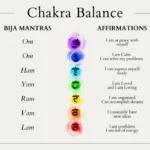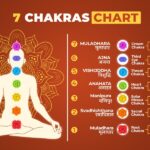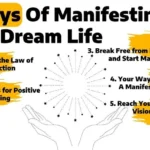In today’s fast-moving world, stress and anxiety have become common. Many people feel tired, both physically and mentally. They search for healing methods that are natural and peaceful. Reiki is one such healing method. It is gentle, non-invasive, and works on the body, mind, and spirit.
Though Reiki began in Japan, it has now become popular around the world, including India. This article explains what Reiki is, how it works, and how it can benefit your life.
What Is Reiki?

Reiki is a natural healing technique that uses energy. The word “Reiki” comes from two Japanese words:
- Rei – meaning “universal” or “spiritual wisdom”
- Ki – meaning “life force energy”
Together, Reiki means “spiritually guided life force energy.”
Reiki is not a religion or a belief system. It is a healing practice that helps balance your energy and promote relaxation and well-being.
Also Read How to Balance Your Chakras at Home: A Simple Guide for Inner Healing
How Does Reiki Work?
Reiki works on the idea that a life energy flows through all living beings. In India, this is similar to what we call Prana in yoga or Shakti in spiritual traditions.
When your energy is strong and flowing freely, you feel healthy and happy. But when your energy is blocked or weak, you may feel tired, stressed, or even fall ill.
A Reiki practitioner acts as a channel for this healing energy. They place their hands lightly on or just above your body. The energy flows through their hands into your body, helping to:
- Clear energy blocks
- Reduce stress and tension
- Balance your chakras
- Support natural healing
You remain fully clothed during a session and lie down or sit comfortably. The session usually lasts 30 to 60 minutes.
What Does Reiki Feel Like?
Everyone experiences Reiki in their own way. Some people feel warmth or tingling. Others feel relaxed, peaceful, or emotional. Many even fall asleep during a session.
Even if you don’t feel anything during the session, Reiki still works. It reaches the areas in your body or mind that need healing.
Benefits of Reiki
1. Reduces Stress and Anxiety
Reiki calms your nervous system. It helps you relax deeply. This can lower stress and bring peace of mind.
2. Improves Sleep
After a session, many people sleep better. Reiki helps quiet the mind and release tension.
3. Supports Healing
Though Reiki does not replace medical treatment, it can help the body heal faster. It is often used alongside other therapies.
4. Balances Emotions
Reiki helps release emotional pain and past trauma. It promotes inner peace, forgiveness, and self-love.
5. Boosts Spiritual Connection
Many people feel more connected to their higher self after Reiki. It helps in spiritual growth and mindfulness.
Reiki in Indian Context
Although Reiki came from Japan, the concept is very familiar to Indian traditions. It is similar to:
- Pranic Healing
- Ayurveda energy balancing
- Chakra cleansing in yoga
- Touch healing practiced by many gurus and saints
Reiki fits well into Indian spiritual practices like meditation, chanting mantras, and visualization. Many Indian Reiki practitioners also use Sanskrit mantras and chakra-focused healing methods.
Can Anyone Learn Reiki?
Yes. Reiki is simple and easy to learn. Anyone can become a Reiki healer by receiving an attunement from a certified Reiki master.
There are different levels of Reiki training:
- Level 1 – Learn to heal yourself and others physically
- Level 2 – Use symbols to send distant healing
- Level 3 (Master level) – Learn advanced healing and how to teach others
You do not need to have any special powers. Just an open mind and a desire to help.
How to Get Started with Reiki
If you are interested in Reiki:
- Book a session with a trained Reiki practitioner
- Try a few sessions to see how your body and mind respond
- If you feel called, join a Reiki course in your city or online
- Practice daily self-healing after learning Level 1
Always choose a teacher who has proper experience and follows ethical healing practices.
Common Myths About Reiki
Myth 1: Reiki is only for spiritual people.
Truth: Reiki works for anyone, regardless of belief or religion.
Myth 2: Reiki is magic or superstition.
Truth: Reiki is energy healing. Many hospitals now accept Reiki as complementary therapy.
Myth 3: Reiki replaces medicine.
Truth: Reiki supports medical treatment but does not replace it.
FAQs on Reiki
Q: Is Reiki safe for everyone?
Yes, Reiki is completely safe. It has no side effects and can be used by children, adults, and even animals.
Q: Can I learn Reiki online?
Yes, many teachers offer online Reiki courses, especially after the pandemic. However, the first attunement should be done carefully by a certified master.
Q: How many sessions do I need?
It depends on your condition. For stress relief, 1–2 sessions may help. For deeper emotional healing, 4–5 sessions or regular self-healing works best.
Q: Do I have to believe in Reiki for it to work?
No. Reiki works even if you don’t believe in it. But an open and relaxed mind helps you receive better.
Q: Can I use Reiki along with yoga and meditation?
Yes. Reiki goes very well with yoga, meditation, chanting, and other spiritual practices.
Final Thoughts
Reiki is a gentle, natural method to heal the body and mind. It is easy to learn, calming to receive, and powerful in its results. Whether you are dealing with stress, low energy, emotional pain, or want spiritual growth — Reiki can support your journey.
In India, where healing traditions are ancient, Reiki blends beautifully with our spiritual culture. You don’t need to change your beliefs to try Reiki. Just stay open, quiet your mind, and let the energy do the work.
Healing begins when you allow it.










